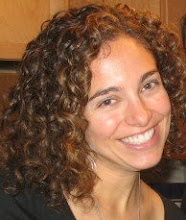The kitchen as a site for chaos and calm, emotional ecstasy and release, has been a fascination of mine ever since I read Como Agua Para Chocolate (Like Water for Chocolate) in my college Spanish class. In the tradition of magical realism the book centers on Tita, born to a family in Mexico whose tradition is that the youngest daughter takes care of the mother and does not marry. Tita is born in the kitchen and raised by the family cook and expresses her feelings through her cooking. When her mother forces her to bake the cake for her sister's wedding (to the man Tita loves), Tita's tears fall into the batter and when the guests taste the cake the next day they all break down in tears for their true love.
Wedding cake scene from "Like Water for Chocolate"
My first year at Bastyr I took a class called Whole Foods Production, a basic cooking class required for all nutrition students. Each week we prepared whole foods meals, experimenting with different grains and greens and protein sources. One week I was assigned to make the polenta, a job that required 45 minutes of active stirring to prevent clumping in the pot. Our instructor explained that making polenta is an act of love. Check out her video, where she explains why she makes Bastyr students think loving thoughts while making polenta:
This past Friday night we did not make polenta, but 15 Bastyr volunteers cooked and served a meal of tortilla soup, enchilada casserole, Spanish rice, salad and brownies, to around 50 homeless youth. We put tremendous effort into designing and preparing the meal so it would be whole foods-based, nutritionally dense and still delicious and appealing. Since it was our first time using the church kitchen and making the recipes in such large quantities there were many bumps and unexpected surprises along the way. Ovens that didn't work, rice that wouldn't cook, pots that were too small. Until the very last minute it was unclear whether we would pull it off. But at 7pm as the door opened and kids lined up, we were completely prepared and even looked like we knew what we were doing. We served the kids and then we sat and ate with them, enjoying the food together. By the end of the night it seemed that the love and effort we had put into their meal outweighed the chaos that preceded it. So while a Friday night spent cooking in a church was far from the experience of my youth, it was equally gratifying.

No comments:
Post a Comment